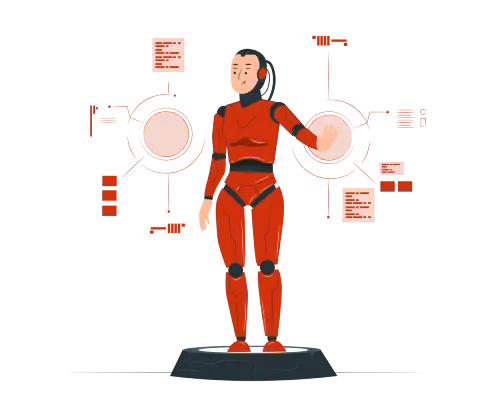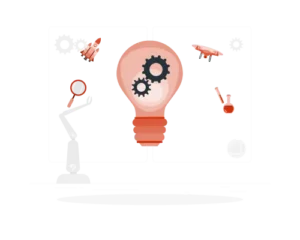Cognitive automation represents the next frontier in technological innovation, where systems can mimic human intelligence to perform complex tasks. Unlike traditional automation that relies on rule-based algorithms, cognitive automation employs advanced technologies like Artificial Intelligence (AI), Natural Language Processing (NLP), and Machine Learning (ML) to solve dynamic problems, process unstructured data, and make decisions with minimal human intervention. This blog dissects these technologies to provide a comprehensive understanding of their roles and interconnections in cognitive automation.
What is Cognitive Automation?
Cognitive automation is the integration of advanced AI-driven technologies into business processes to handle tasks that previously required human cognitive capabilities. This includes understanding natural language, analysing images, and making predictions based on historical data.
Key Features of Cognitive Automation:
- Dynamic Learning: Cognitive systems learn from new data and adapt over time without requiring manual updates. For instance, fraud detection algorithms in banking continuously refine their models based on newly identified fraudulent patterns.
- Data Interpretation: Unlike traditional systems that rely on structured inputs (e.g., databases), cognitive systems process diverse data types like free-text documents, audio files, or images. For example, an invoice processing system can extract and categorize information from scanned PDF files, reducing manual data entry.
- Decision-Making: Leveraging reasoning capabilities, cognitive automation can analyse situations and recommend or execute the best course of action. An e-commerce recommendation engine is a good example, dynamically suggesting products based on user behaviour and preferences.
Differentiation from Traditional Automation:
- Rule-Based vs. Intelligence-Based: Traditional automation strictly follows predefined workflows. In contrast, cognitive automation uses algorithms capable of reasoning and adapting. For instance, a robotic process automation (RPA) bot might flag errors in a spreadsheet based on static rules, while a cognitive system could analyse patterns to predict potential issues proactively.
- Static vs. Adaptive: Traditional systems depend on manual reprogramming to incorporate changes, whereas cognitive systems improve autonomously. A cognitive chatbot evolves from handling simple FAQs to engaging in nuanced conversations as it learns from user interactions.
Breaking Down the Core Technologies
Artificial Intelligence (AI)
AI is the foundational technology driving cognitive automation, as it simulates human intelligence in machines. This capability allows systems to analyse, adapt, and act autonomously, bridging the gap between human expertise and automated efficiency.
Key Components of AI in Automation:
- Reasoning: AI systems excel at analysing vast amounts of data to draw meaningful conclusions. For example, predictive analytics in retail can identify trends and forecast demand based on customer behaviour.
- Learning: Through machine learning, algorithms evolve by learning from past experiences without the need for explicit programming. This adaptability is evident in applications such as fraud detection, where systems refine their accuracy over time by detecting anomalous patterns.
- Perception: AI enables machines to interpret and process sensory inputs such as images, sounds, and natural language. For instance, facial recognition technology uses AI-driven perception to identify individuals with high accuracy, while voice assistants process auditory cues to execute commands seamlessly.
Natural Language Processing (NLP)
NLP bridges the gap between human communication and machines, enabling systems to comprehend and respond to human language with remarkable accuracy. This technology plays a pivotal role in cognitive automation by translating complex linguistic inputs into actionable insights.
NLP Techniques:
- Syntax Analysis: This technique focuses on parsing the structure of sentences to understand grammar and relationships between words. For example, a sentence like “The dog chased the cat” is broken down to identify the subject, verb, and object, ensuring accurate interpretation.
- Semantic Analysis: Going beyond grammar, semantic analysis derives meaning by considering the context of words. For instance, the word “bank” could mean a financial institution or the edge of a river, depending on the surrounding text.
- Sentiment Analysis: This technique identifies emotions or opinions within text. Businesses use sentiment analysis in social media monitoring to gauge public perception of their brand or products.
Role of NLP in Cognitive Automation:
- Chatbots and Virtual Assistants: NLP enables chatbots and virtual assistants to engage in meaningful and context-aware conversations with users. For example, a customer asking, “What’s the status of my order?” can receive an accurate and personalized response powered by NLP.
- Document Processing: NLP extracts essential information from unstructured documents such as contracts, emails, or reports. A cognitive automation tool might scan hundreds of legal contracts to highlight clauses relevant to compliance requirements.
- Voice Recognition: By converting spoken words into text, NLP powers applications like virtual meeting transcriptions and voice-activated devices. For instance, a healthcare provider might use voice recognition to transcribe patient notes during consultations, saving time and improving accuracy.
Machine Learning (ML)
ML is a subset of AI that focuses on enabling algorithms to make decisions or predictions based on data, without the need for explicit programming. It drives many cognitive automation capabilities by providing systems with the ability to learn from and adapt to new information.
Types of Machine Learning
- Supervised Learning: This type of learning involves training algorithms on labelled datasets where input-output pairs are known. For example, in email spam classification, the system learns to differentiate between spam and legitimate emails by analysing labelled examples.
- Unsupervised Learning: Here, systems work with unlabelled data to identify hidden patterns or structures. A common application is customer segmentation, where businesses group customers based on purchasing behaviour or demographic similarities.
- Reinforcement Learning: In this approach, algorithms learn by interacting with an environment and receiving feedback in the form of rewards or penalties. Over time, the system refines its strategies to achieve optimal outcomes. For instance, reinforcement learning is used in robotics for navigation and task execution.
ML Algorithms in Automation
- Classification Algorithms: These algorithms categorize data into predefined groups. An example is image recognition systems that classify images of objects like cats or dogs based on learned features.
- Clustering Algorithms: Used to group data points based on similarities, clustering algorithms are valuable in applications such as market segmentation, where businesses identify distinct customer groups to target.
- Neural Networks: Mimicking the structure and function of the human brain, neural networks are adept at solving complex problems like facial recognition and natural language translation by learning intricate patterns in data.
Examples of ML in Automation
- Pattern Recognition: Machine learning algorithms excel at identifying trends and anomalies in large datasets. For example, businesses use ML to analyse sales data and optimize inventory management by predicting demand.
- Anomaly Detection: ML systems are widely deployed in fields like cybersecurity and healthcare to detect irregular patterns. For instance, an anomaly detection algorithm might flag suspicious transactions in financial systems or identify early signs of diseases in medical imaging.
How These Technologies Interconnect
Cognitive automation is not merely the deployment of individual technologies but their harmonious integration to deliver transformative outcomes. Each technology plays a pivotal role, and their combined effect amplifies the capabilities of automated systems far beyond what they can achieve independently.
Synergies Between AI, NLP, and ML
- AI as the Foundation: AI forms the backbone of cognitive automation, providing the overarching intelligence framework. It drives decision-making processes, orchestrates data analysis, and ensures systems operate autonomously in complex environments.
- NLP for Understanding: NLP enables systems to bridge the communication gap between humans and machines. By allowing systems to comprehend and generate human language, NLP facilitates meaningful interactions, making automation more intuitive and user-friendly.
- ML for Learning: ML empowers systems with adaptability and continuous improvement. By learning from past data and experiences, ML refines processes, enhances predictions, and ensures that cognitive automation systems stay relevant in dynamic scenarios.
These technologies do not function in isolation; their synergy is essential for creating robust, intelligent systems capable of handling real-world complexities with precision and efficiency.
Conclusion
Cognitive automation—powered by AI, NLP, and ML—is revolutionizing industries by enabling systems to perform tasks with human-like intelligence. Understanding these technologies is crucial for leaders aiming to leverage automation to drive innovation, efficiency, and growth. While these technologies bring transformative potential, they require thoughtful integration and strategic planning to maximize their value. As cognitive automation continues to evolve, it will reshape how businesses operate, making it imperative for organizations to stay ahead in this rapidly advancing field.




